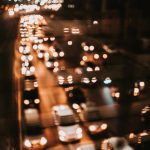For hundreds of millions of years, the web of life on land has been dependent on, and determined by, day and night, light and dark. Photosynthesis, the process by which plants grow, depends on light and dark. And all animals depend on plants for their survival.
One of the less frequently reported impacts of human activity on the environment is the presence of artificial light. Lighting disrupts photosynthesis and the activities of insects, birds and other animals.
A recent study, Light pollution is a driver of insect declines, says habitat loss, pesticide use, invasive species and climate change have all played a role in insect declines globally, but that artificial light at night is another important—but often overlooked—cause.
The light affects insect movement, foraging, reproduction and predation, says the study which, however, suggests that insect biodiversity loss can be mitigated with better informed lighting practices.
“Artificial light at night is unique among anthropogenic habitat disturbances in that it is fairly easy to ameliorate and leaves behind no residual effects. Greater recognition of the ways in which [artificial light at night] affects insects can help conservationists reduce or eliminate one of the major drivers of insect declines,“ it says.
With artificial light increasing by around 2 per cent per year globally, light pollution has become a pertinent issue.
At the Convention on Migratory Species of Wild Animals thirteenth meeting of the Conference of Parties (CMS COP13) which took place in Gandhinagar, India from 17 to 22 February 2020, delegates considered the topic for the first time following draft resolutions submitted independently by the European Union and Australia.
Artificial light not only impacts insects. Turtles, seabirds and shorebirds, and ecosystems at large, are being affected.
Artificial light at night can disorientate adult and hatchling sea turtles, so they are unable to find the ocean. Birds are also known to become disorientated by lights, resulting in higher bird mortality due to collisions with artificial structures such as buildings. Migratory shorebirds may be exposed to increased predation where lighting makes them visible. They may also abandon preferable roosting sites to avoid lights.
“Light pollution can disrupt critical behaviour in wildlife,“ says Amy Fraenkel, Executive Secretary of the Convention on Migratory Species.
“It can stall the recovery of threatened species and interfere with their ability to undertake long-distance migrations, reduce breeding success and their chances of survival. Light pollution is a growing phenomenon which needs to be considered in conservation efforts and which can be avoided or minimized through nature-friendly lighting design and management.”
Managing the impact of artificial light
New proposed guidelines drafted by the Government of Australia provide a framework for assessing and managing the impact of artificial light on susceptible wildlife, including migratory species. For example, they consider wildlife-friendly lighting design and the management of light sources near protected wildlife.
The guidelines recognize the potential of conflicting requirements for wildlife conservation and human safety and the need for a balance between the two.
To prevent harm to migratory species, the guidelines propose a multi-step approach. If artificial light is visible outside, best practice light design should be applied so as not to impact nearby habitats of threatened species. An environmental impact assessment should consider negative effects before artificial light sources are installed.
Nature-based solutions offer the best way to achieve human well-being, tackle climate change and protect our living planet. Yet nature is in crisis, as we are losing species at a rate 1,000 times greater than at any other time in recorded human history and one million species face extinction. In addition to important moments for decision makers, including the COP 15 on Biodiversity, the 2020 “super year” is a major opportunity to bring nature back from the brink. The future of humanity depends on action now.





